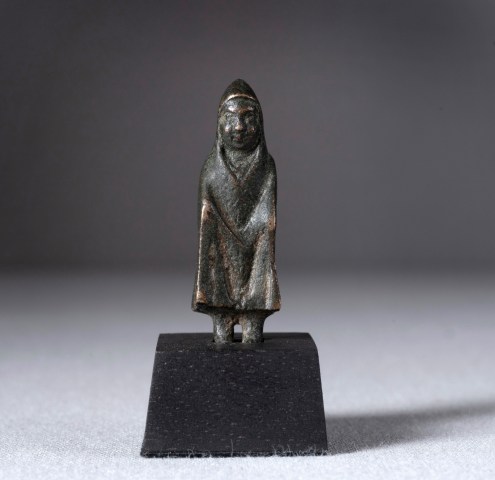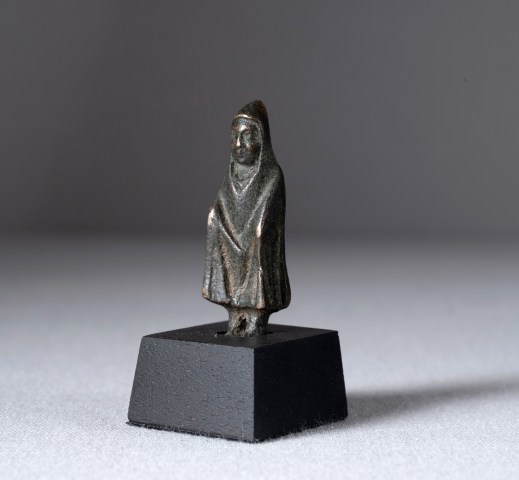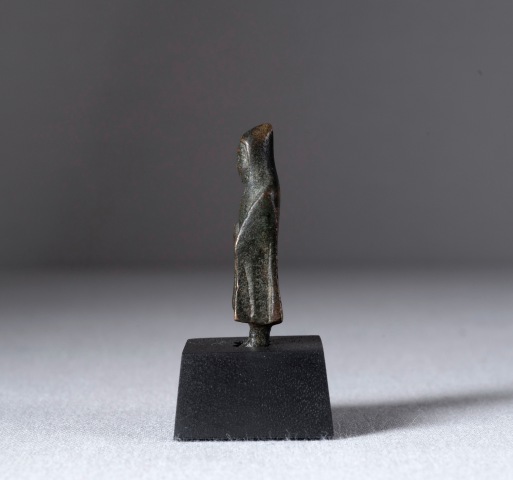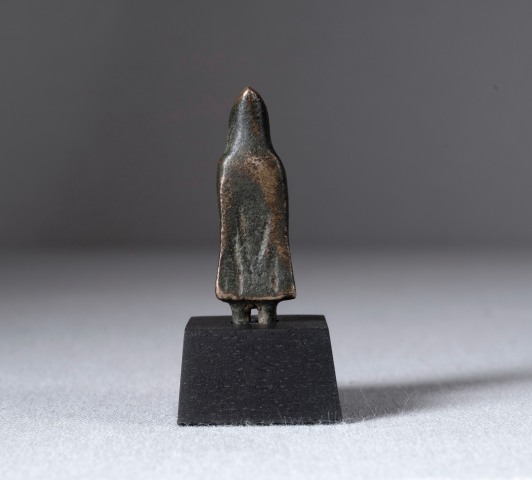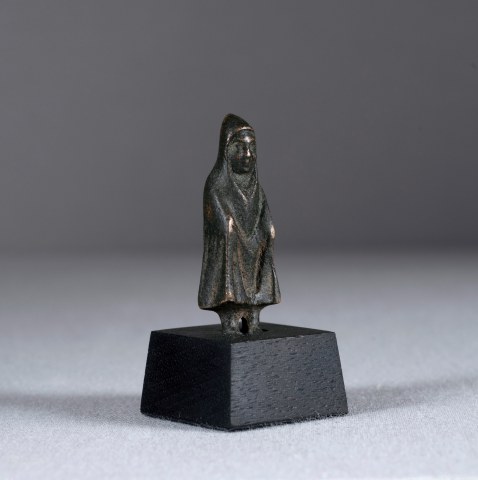121. Roman statuette of Telesphorus, Asia Minor, 2nd century AD
Bronze
Height: 4cm
11760 IVP
Copyright The Artist
£ 1,800
Further images
Telesphorus, whose name literally means 'Bringer of Completion', was the son of Asklepios, and a fellow god of healing. He is shown here as a child and wearing an all-enveloping...
Telesphorus, whose name literally means "Bringer of Completion", was the son of Asklepios, and a fellow god of healing. He is shown here as a child and wearing an all-enveloping hooded cloak. He is often shown with a phrygian hat or pointed cap upon his head, which was normally covered by a long cape that also enveloped his hands, exposing only his boots. Intact.
It is believed that Telesphoros was originally a celtic god, whose worship was brought to Anatolia in the 3rd century BC by the Galatians, after which his association as the son of Asklepios (the god of medicine and healing) appears to have formed. His worship stretched the Greco-Roman world, but it was at the precinct of Asklepios in Pergamon that he had his own temple, the Telesphorion.
It is believed that Telesphoros was originally a celtic god, whose worship was brought to Anatolia in the 3rd century BC by the Galatians, after which his association as the son of Asklepios (the god of medicine and healing) appears to have formed. His worship stretched the Greco-Roman world, but it was at the precinct of Asklepios in Pergamon that he had his own temple, the Telesphorion.
